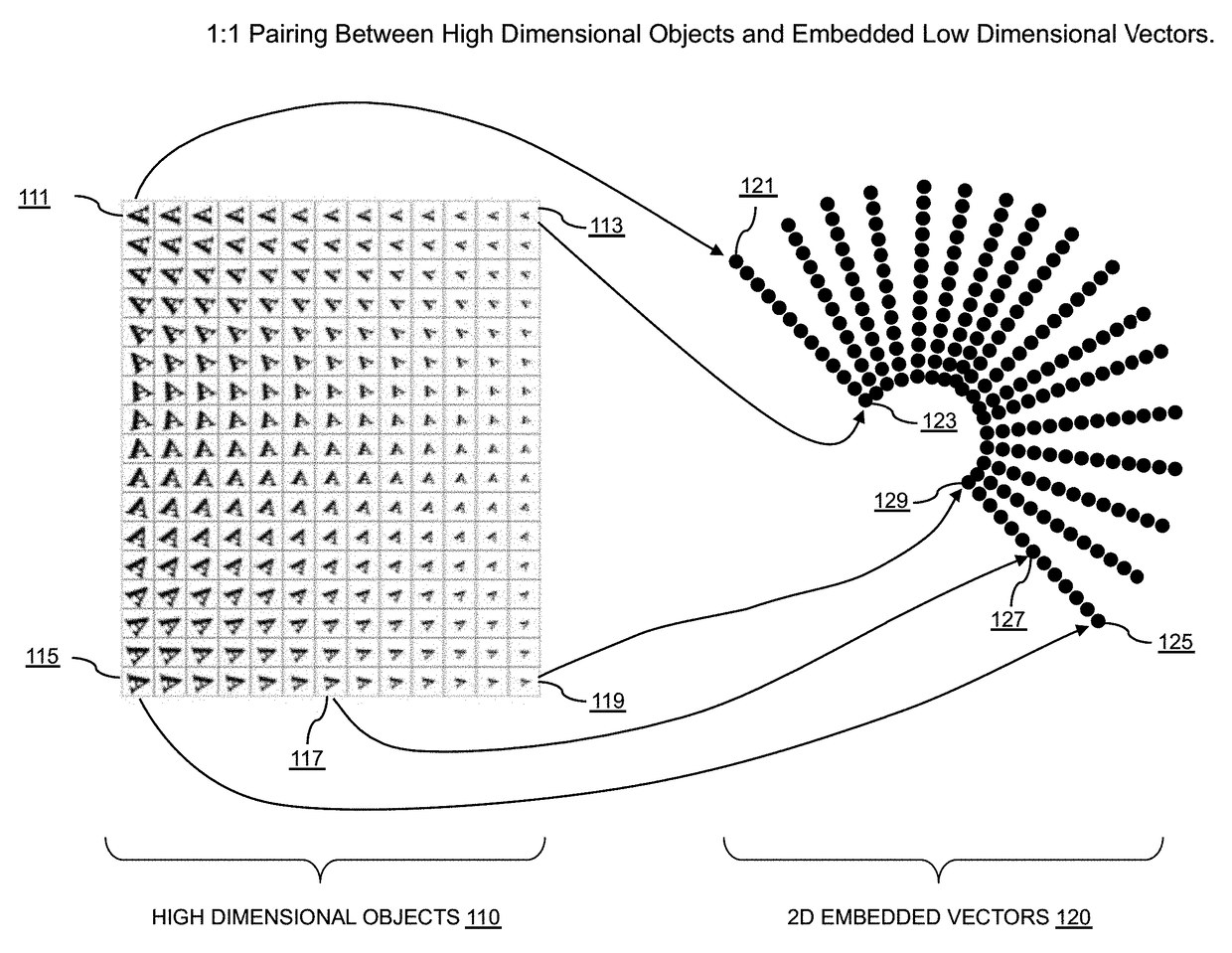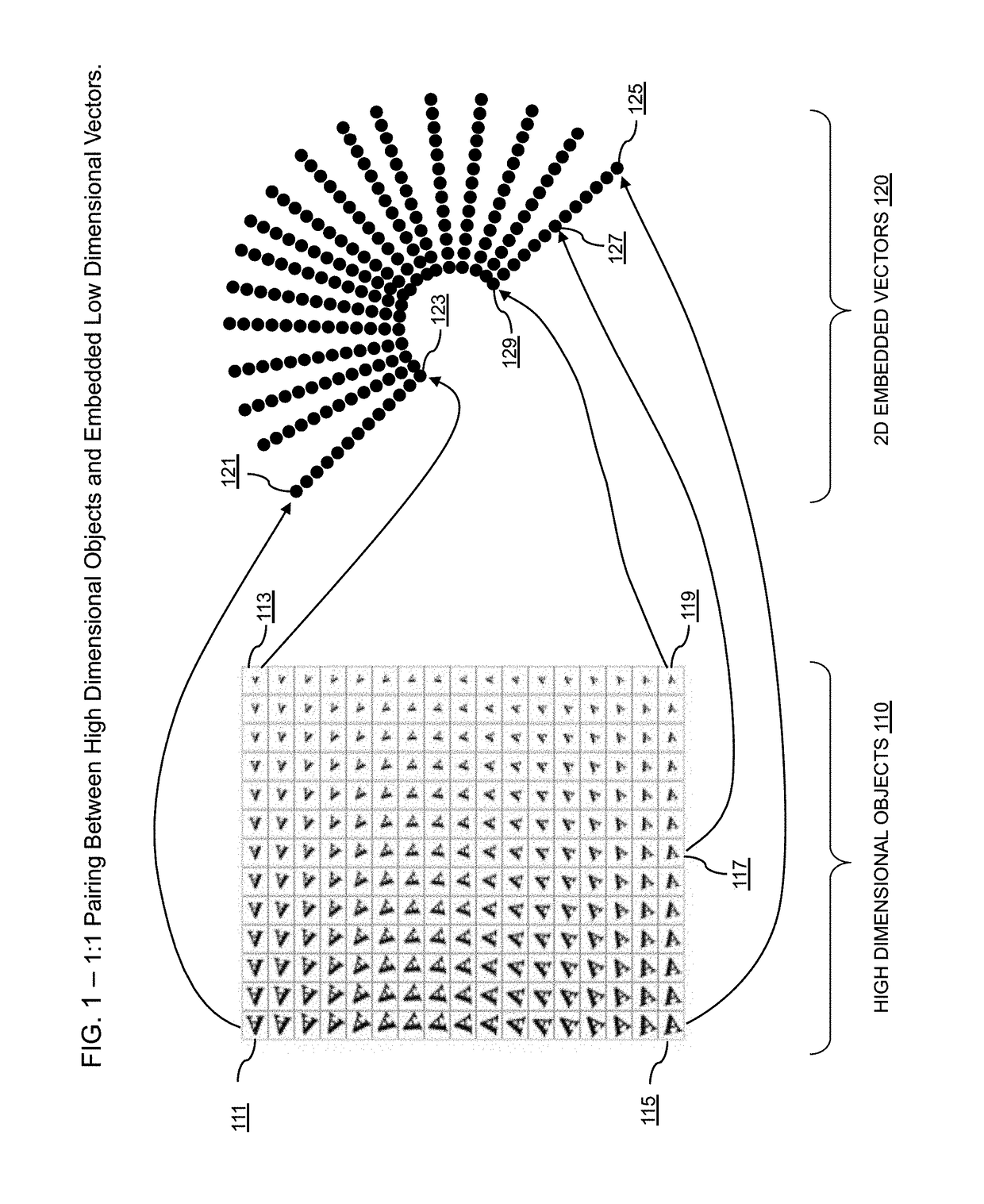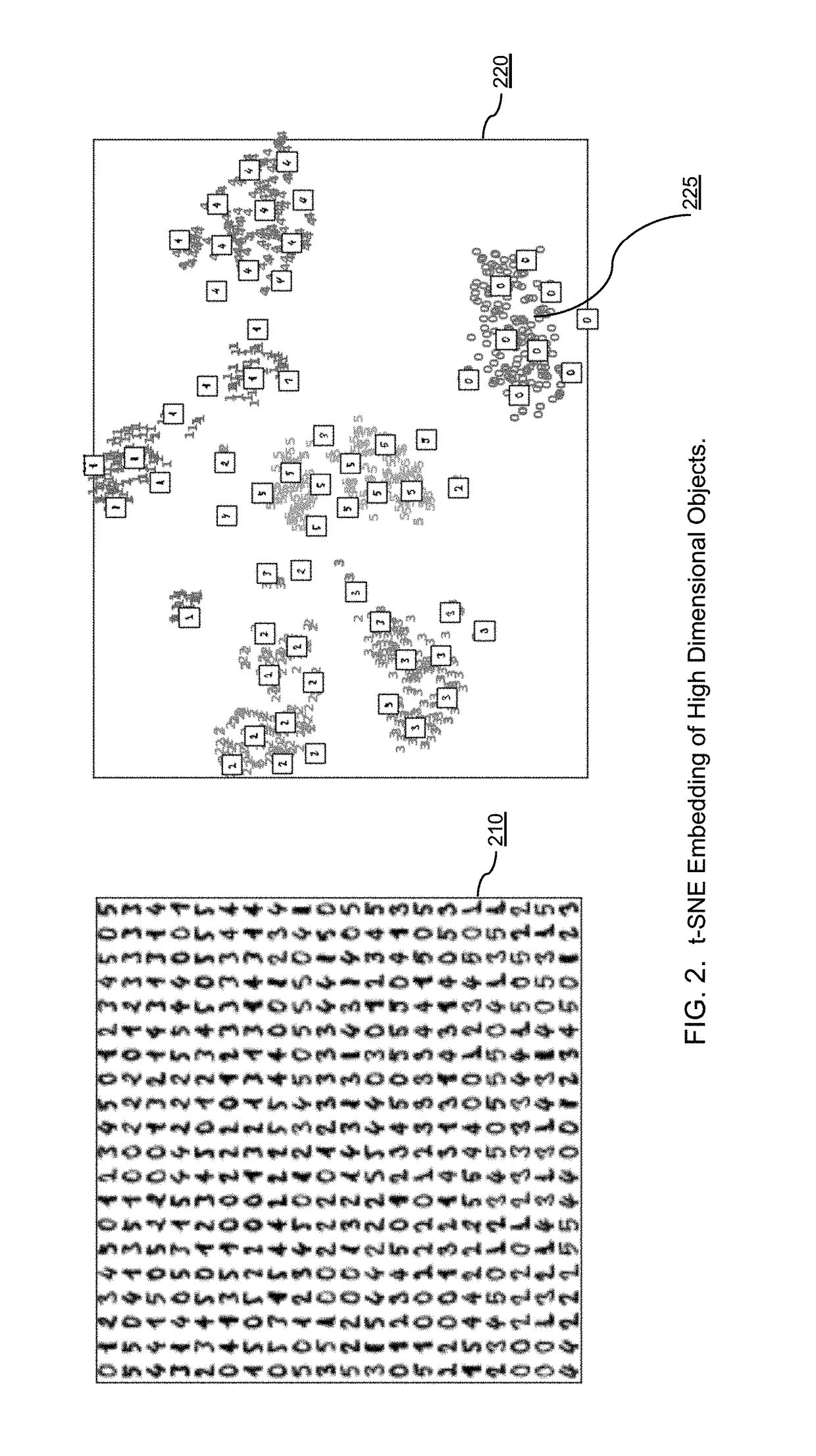Systems and methods for fast and repeatable embedding of high-dimensional data objects using deep learning with power efficient GPU and FPGA-based processing platforms
a high-dimensional data and deep learning technology, applied in the field of systems and methods for improving the speed, repeatability, utility and utility of computing an embedding of high-dimensional data objects, to achieve the effects of improving the performance of other downstream tasks/applications, reducing time and power requirements, and speeding up computation
- Summary
- Abstract
- Description
- Claims
- Application Information
AI Technical Summary
Benefits of technology
Problems solved by technology
Method used
Image
Examples
Embodiment Construction
[0058]Embodiments of the present invention will be described with reference to the accompanying drawings, wherein like parts are designated by like reference numerals throughout, and wherein the leftmost digit of each reference number refers to the drawing number of the figure in which the referenced part first appears.
Overview
[0059]FIG. 3 illustrates an exemplary embodiment of a method and system for deep embedding and its deployment, in accordance with the present invention.
[0060]The method comprises five stages, including optional pre-processing 310, embedding 320, learning of a deep embedding architecture 330, the export of a deep embedding 340, and the deployment of deep embedding into an application / use case 350. The first stage, preprocessing 310, is optional, and is only performed if desired.
Preprocessing Raw High Dimensional Objects
[0061]FIG. 4 illustrates an exemplary embodiment of an optional pre-processing module as first illustrated in stage 310 of FIG. 3. As an introdu...
PUM
 Login to View More
Login to View More Abstract
Description
Claims
Application Information
 Login to View More
Login to View More - R&D
- Intellectual Property
- Life Sciences
- Materials
- Tech Scout
- Unparalleled Data Quality
- Higher Quality Content
- 60% Fewer Hallucinations
Browse by: Latest US Patents, China's latest patents, Technical Efficacy Thesaurus, Application Domain, Technology Topic, Popular Technical Reports.
© 2025 PatSnap. All rights reserved.Legal|Privacy policy|Modern Slavery Act Transparency Statement|Sitemap|About US| Contact US: help@patsnap.com



